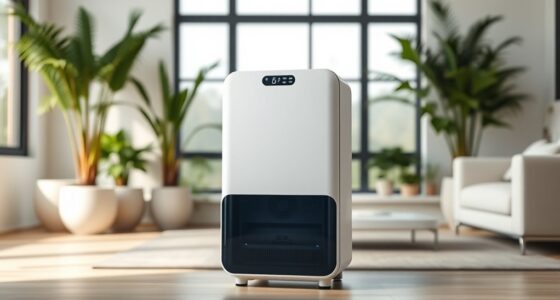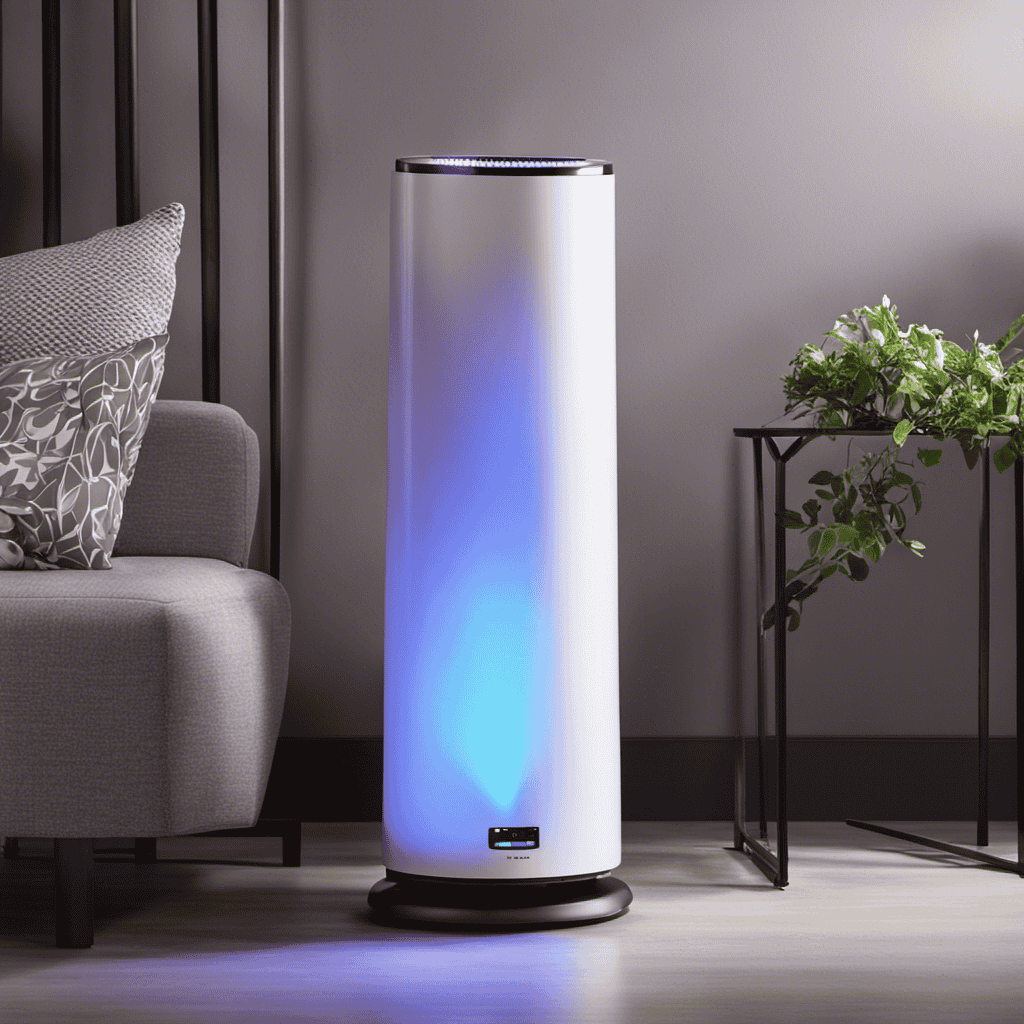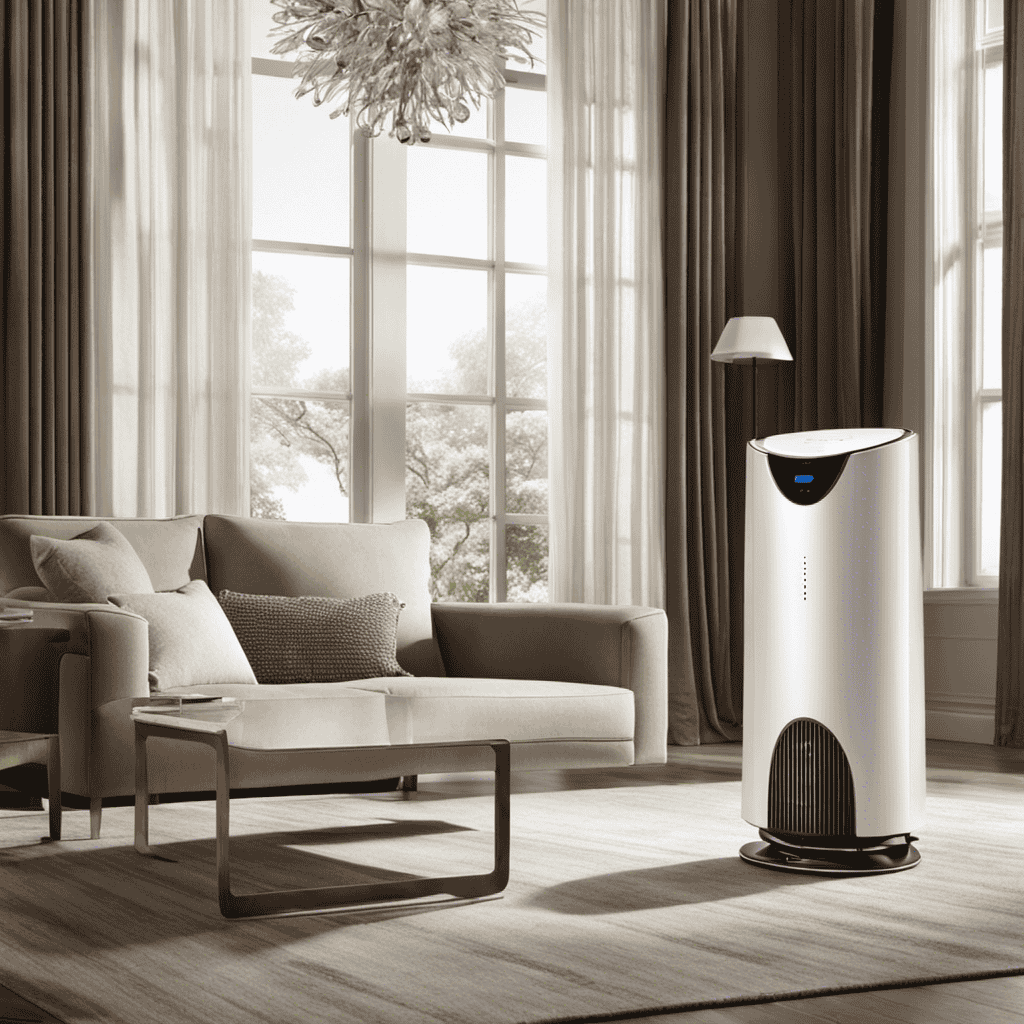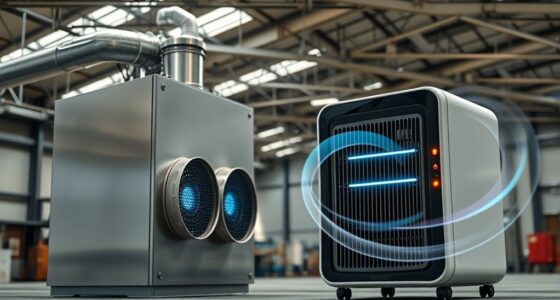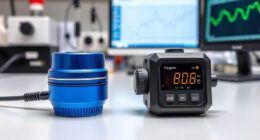Activated-carbon-only units are ideal when simplicity and ease of use matter most. They use only activated carbon to adsorb odors, chemicals, and pollutants from air or water, requiring minimal maintenance. These units are straightforward, durable, and cost-effective, making them perfect for situations where you want reliable filtration without complex parts or technology. If you want to discover more about when these simple units fit your needs, keep exploring the benefits they offer.
Key Takeaways
- Activated-carbon-only units are ideal when simple, low-maintenance filtration effectively removes odors, chemicals, and VOCs.
- They are suitable for environments prioritizing ease of use without complex mechanical or electrical components.
- When quick, reliable adsorption of common contaminants is needed, these units offer a practical solution.
- They excel in settings where chemical contamination isn’t severe, and straightforward operation is preferred.
- Their simple design ensures cost-effective, durable, and easy-to-maintain filtration for residential or industrial use.
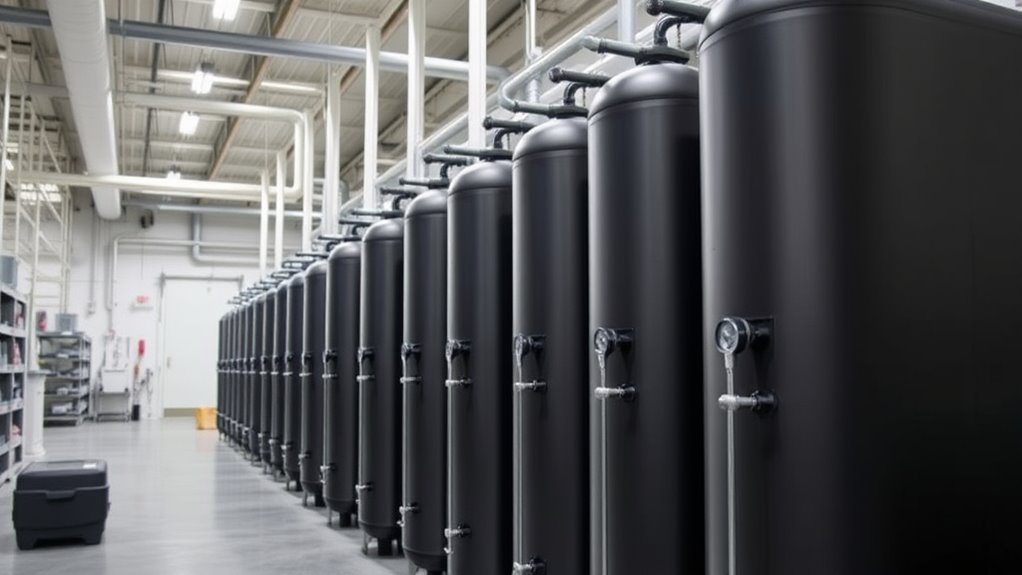
Activated-carbon-only units are specialized filtration systems that rely solely on activated carbon to remove contaminants from air or water. These units are designed to harness the natural properties of activated carbon, which excels at trapping impurities through a process called adsorption. When contaminants pass through the filter, they adhere to the surface of the carbon particles, effectively removing pollutants like chlorine, odors, volatile organic compounds, and certain chemicals. This method is highly effective for a broad range of contaminants, making these units popular in both residential and industrial settings. Their straightforward design means you get reliable performance without complicated components or multi-stage filtration, simplifying your overall maintenance.
One of the key advantages of activated-carbon-only units is their impressive adsorption efficiency. Activated carbon has an enormous surface area—often measuring hundreds of acres per pound—allowing it to adsorb a significant amount of contaminants quickly. This high adsorption efficiency means you can expect cleaner air or water in a shorter time frame, especially when the unit is properly maintained. Since the process relies on physical attraction rather than chemical reactions, it’s highly effective against a wide variety of pollutants, especially organic compounds and odors. This makes these units particularly useful for improving water taste and smell or removing airborne pollutants in environments where chemical contamination isn’t extreme. Additionally, their effectiveness can be enhanced by properly selecting the right type of activated carbon tailored to specific contaminants.
Another benefit that appeals to many users is the maintenance simplicity associated with activated-carbon-only units. Unlike more complex filtration systems that require multiple stages, chemical dosing, or frequent component replacements, these units generally involve just replacing or reactivating the carbon media when its adsorption capacity reaches its limit. Such straightforward upkeep means you spend less time troubleshooting or scheduling extensive maintenance routines. Typically, you’ll need to check the carbon media periodically, monitor flow rates, and replace the filter media when necessary. This simplicity not only saves you money but also reduces downtime, ensuring your filtration system remains reliable with minimal effort.
Furthermore, because activated-carbon-only units lack complex mechanical parts or electrical components, they tend to be more durable and easier to operate. This simplicity makes them accessible for many users, even those without technical expertise. They’re also cost-effective upfront and over time, as maintenance costs are kept low. When you prioritize ease of use and effective contaminant removal, these units stand out as a practical, low-maintenance solution. Their ability to deliver high adsorption efficiency with minimal upkeep makes activated-carbon-only units an excellent choice when simplicity and performance go hand-in-hand. Proper regeneration techniques can further extend the lifespan of the activated carbon, maintaining its effectiveness over time.
Frequently Asked Questions
How Do Activated-Carbon-Only Units Compare Cost-Wise to Multi-Stage Systems?
When you compare costs between activated-carbon-only units and multi-stage systems, the cost comparison often favors simpler units due to lower capital and maintenance expenses. Efficiency analysis shows that while multi-stage systems may offer higher removal rates, they come with increased complexity and operational costs. If your priority is straightforward operation and budget-friendly upkeep, activated-carbon-only units are typically more cost-effective for your needs.
What Are the Maintenance Requirements for Activated-Carbon-Only Units?
Imagine you operate an activated-carbon-only unit, and after a few months, your filter needs regeneration or carbon replacement. You’ll need to regularly inspect the filter, monitor its adsorption capacity, and perform filter regeneration when saturated. Carbon replacement involves removing and replacing spent carbon, which is straightforward but essential for maintaining efficiency. Routine maintenance guarantees your system stays effective, with minimal downtime, keeping your air clean without complex procedures.
Can Activated-Carbon-Only Units Handle Chemical-Specific Pollutants Effectively?
You might wonder if activated-carbon-only units can handle chemical-specific pollutants effectively. They excel at targeting a wide pollutant range, especially organic compounds, thanks to chemical specificity. However, for certain highly specialized or reactive chemicals, their effectiveness can vary. While simple and easy to maintain, you should assess your pollutant profile to guarantee activated carbon provides the necessary coverage for your specific chemical pollutants.
What Is the Typical Lifespan of Activated Carbon in These Units?
Imagine a filter gradually losing its power, like a fading shadow. That’s your activated carbon’s unit lifespan, which typically ranges from 1 to 3 years depending on usage and pollutants. You’ll need to plan for carbon replacement as the adsorptive capacity diminishes. Regular monitoring helps guarantee your system remains effective, preventing breakthrough and maintaining air quality without overextending your carbon’s effectiveness.
Are There Limitations to Using Activated-Carbon-Only Units in Large-Scale Applications?
You might face scalability challenges with activated-carbon-only units in large-scale applications. As you increase capacity, regeneration can become difficult, impacting efficiency and cost. Plus, handling large amounts of activated carbon requires more maintenance, and its lifespan may decrease due to higher contaminant loads. These limitations mean you need to carefully consider whether these units suit your scale, or if alternative systems might better meet your needs.
Conclusion
So, when simplicity wins, activated-carbon-only units prove their strength. They deliver efficiency, they offer affordability, and they guarantee ease of maintenance. They streamline processes, reduce complexities, and focus on what truly matters. In a world full of options, they stand out by being straightforward. Choose activated-carbon-only units for reliability, for effectiveness, and for peace of mind. Because sometimes, the simplest solution is the best one, and that’s where true success begins.



